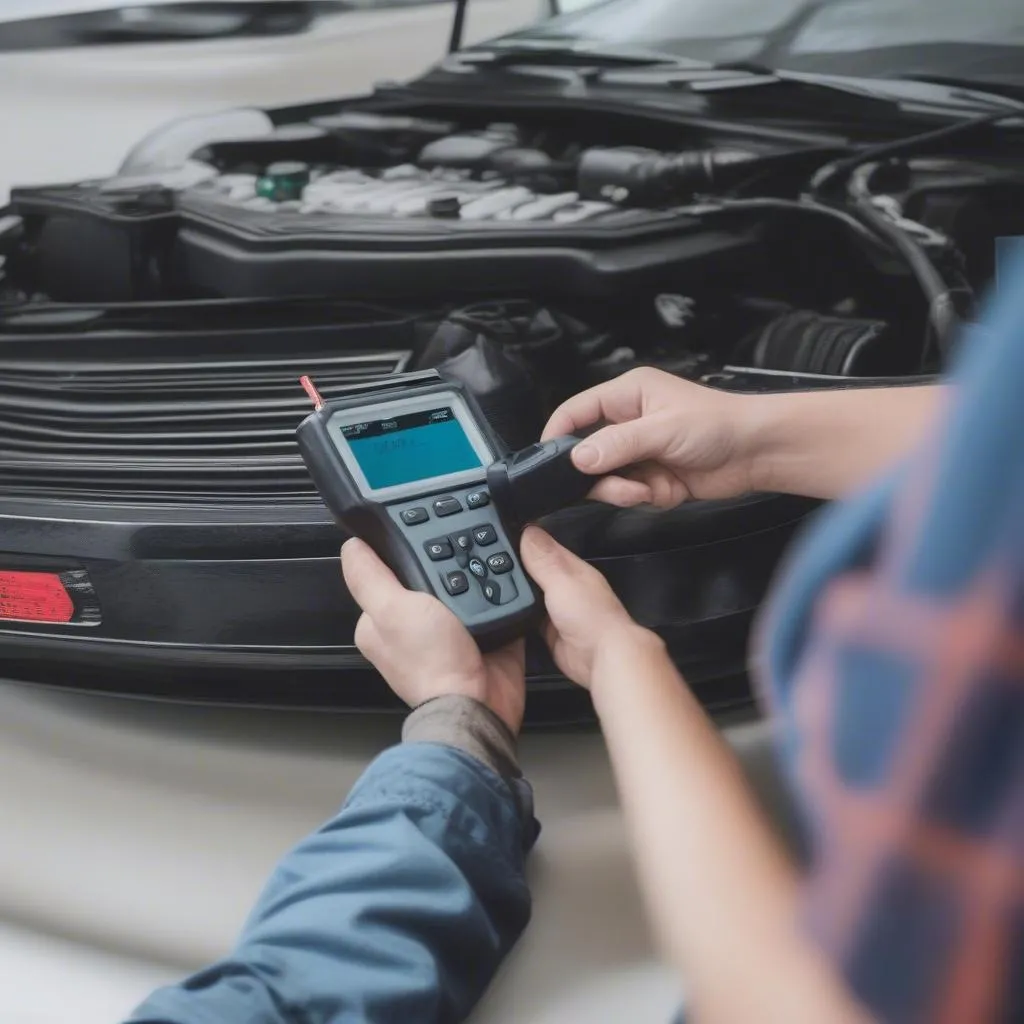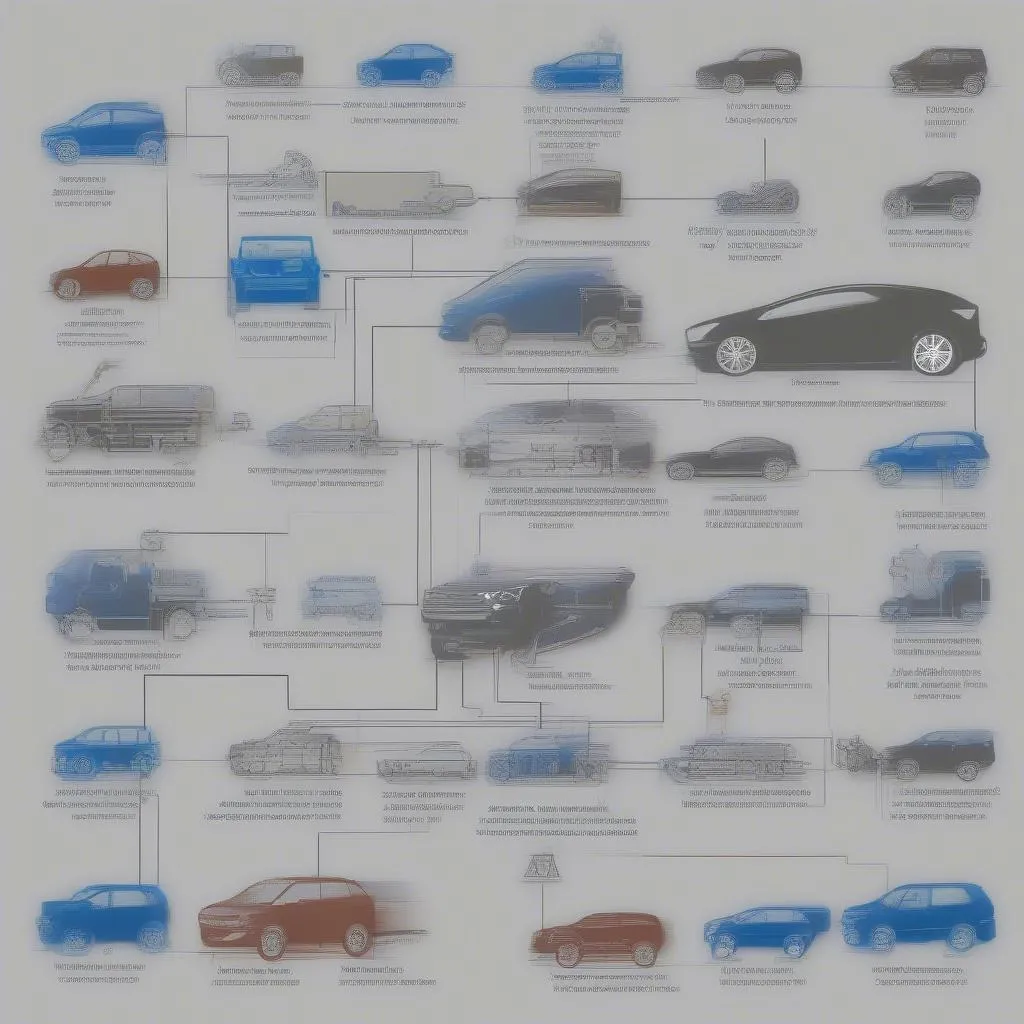Have you ever been working on a car, and suddenly, it starts acting up? Maybe the engine light comes on, or the car won’t start, and you’re left scratching your head wondering what’s wrong. This is where a scan tool comes in handy. A scan tool allows you to communicate with your car’s computer, read diagnostic trouble codes (DTCs), and even clear them.
Why is Understanding Your Scan Tool So Important?
Using a scan tool is crucial for any mechanic or enthusiast looking to get more than just a basic understanding of a vehicle’s condition. Here’s why:
- It’s like a translator for your car: Think of your car’s computer as a complex language that needs someone to translate it. A scan tool helps bridge that gap between you and the car’s internal systems.
- Essential for troubleshooting and repair: When your car throws an engine light, the scan tool helps you understand what’s wrong and guide you towards the right solution.
- Proactive maintenance: You can use a scan tool to check for potential problems before they turn into major issues, saving you time and money in the long run.
- Save time and money: By diagnosing problems efficiently, a scan tool helps you avoid unnecessary repairs and potential costly mistakes.
How to Use Your Scan Tool: A Step-by-Step Guide
The world of scan tools is diverse, with different models designed for various car makes and models. While the exact steps might vary, here’s a general guide to using your scan tool:
1. Choose the Right Scan Tool
You need a scan tool compatible with your vehicle. Some scan tools are universal and work with most vehicles, while others are specific to certain brands or models.
For instance, if you’re working on a BMW, you’ll need a scan tool that’s compatible with the BMW systems. If you are looking for a tool that works across a variety of brands, you might consider one compatible with OBD-II.
2. Connect the Scan Tool
Most scan tools connect to your vehicle through the OBD-II port. You can usually find this port under the dashboard, near the steering column.
Once you’ve plugged the tool into the port, turn the ignition to the “on” position. Some scan tools require a special key sequence for starting the diagnostic process.
3. Select Your Vehicle
Once the scan tool has connected to your vehicle, you’ll need to select the year, make, and model. This ensures the scan tool communicates correctly with your vehicle’s computer.
4. Access Diagnostic Information
You can now access various information, such as:
- Diagnostic trouble codes (DTCs): These codes provide clues about potential problems in your car. You’ll find a description of the code in the user manual or online.
- Live data: This information shows real-time data about your vehicle’s systems, such as engine speed, fuel pressure, and coolant temperature.
- Actuator testing: Some scan tools can test actuators like solenoids and sensors to confirm their functionality.
5. Interpret the Results
Once you’ve gathered the information, it’s time to interpret the results.
- Code lookup: You can look up the DTCs using a service manual or online resources.
- Live data analysis: Compare live data readings to the manufacturer’s specifications.
- Troubleshoot the problem: Use the information from the scan tool to identify the potential cause of the problem and start troubleshooting.
6. Clear Codes and Reset Systems
Once you’ve addressed the problem, you can use the scan tool to clear the codes. This will reset the engine light and ensure your car’s computer is ready for future diagnostics.
Frequently Asked Questions (FAQ)
Q: What is a scan tool?
A: A scan tool is a diagnostic tool that allows you to communicate with your car’s computer. It can read and clear diagnostic trouble codes, access live data, and perform other functions to help you diagnose and repair problems.
Q: How much does a scan tool cost?
A: The cost of a scan tool varies depending on the features and capabilities. You can find basic scan tools for under $100, while more advanced models can cost several hundred dollars.
Q: What types of scan tools are available?
A: There are various types of scan tools, including:
- OBD-II scan tools: These are universal tools that work with most vehicles manufactured after 1996.
- Manufacturer-specific scan tools: These tools are designed for specific vehicle brands or models and offer more advanced features.
Q: Can I use a scan tool to diagnose any problem?
A: While a scan tool can be very helpful for diagnosing problems, it’s not a magic bullet. Some problems may not be detectable with a scan tool, requiring additional diagnostic procedures.
Q: Should I use a scan tool myself or take my car to a mechanic?
A: If you’re comfortable working on cars and have a basic understanding of diagnostics, you can use a scan tool yourself. However, if you’re not confident in your abilities, it’s always best to consult a qualified mechanic.
Get Help from the Experts at Diag XCar!
Understanding your car’s systems can be daunting, but with the right tool and a bit of knowledge, you can confidently diagnose and repair your vehicle. If you’re still feeling overwhelmed, don’t hesitate to reach out to the experts at Diag XCar! We offer comprehensive support and guidance for all your automotive diagnostic needs.
 OBD-II scan tool
OBD-II scan tool
 vehicle systems
vehicle systems
Ready to get started? Contact us today through WhatsApp: +84767531508. Our expert team is available 24/7 to help you with all your scan tool needs.
Don’t forget to check out our other articles! You can find more information about scan tools, vehicle diagnostics, and car repair tips on Diag XCar.
What other questions do you have about using a scan tool? Leave a comment below, and we’ll be happy to help!


